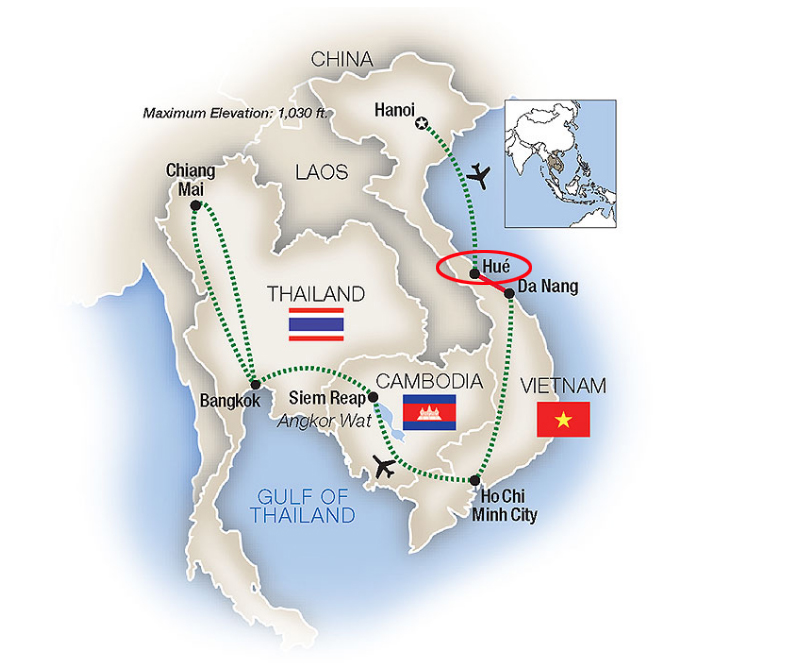Vietnam: The Forbidden Purple City of Hue
Sep 9, 2022 14:54:47 #
We departed Hanoi and flew to Hue, Vietnam's most beautiful city and now a UNESCO World Heritage Site. We checked in to La Residence Resort on the Perfume River and began our tour by cyclo the next morning.
Huế (Vietnamese: [hwě] (listen)) is the capital of Thừa Thiên Huế province in central Vietnam and was the capital of Đàng Trong from 1738 to 1775 and of Vietnam during the Nguyễn dynasty from 1802 to 1945. The city served as the old Imperial City and administrative capital for the Nguyễn dynasty and later functioned as the administrative capital of the protectorate of Annam during the French Indochina period. It contains a UNESCO-designated site, the Complex of Huế Monuments, which is a popular tourist attraction. Alongside its moat and thick stone walls the complex encompasses the Imperial City of Huế, with palaces and shrines; the Forbidden Purple City, once the emperor's home; and a replica of the Royal Theater.
Nearly 4.2 million visitors had visited the city in 2019 and many of its historic landmarks are still undergoing restoration.
History:
The oldest ruins in Hue belong to the Kingdom of Lam Ap, dating back to the 4th century AD. The ruins of its capital, the ancient city of Kandarpapura (lit. 'the city where Śiva burnt Kama'), is now located in Long Tho Hill, three kilometers to the west of the city. Kandarpapura might have only been established during the reign of Kandarpadharma (r. 629–640) and it was named after the king, certainly it may be not the name of the capital of former Lam Ap kingdom. Another Champa ruin in the vicinity, the ancient city of Hoa Chau is dated back to the 9th century.
In 1306, the King of Champa, Che Man offered Vietnam two Cham prefectures, O and Ly, in exchange for marriage with a Vietnamese princess named Huyen Tran. The Vietnamese King Tran Anh Tong accepted this offer. He took and renamed O and Ly prefectures to Thuan prefecture and Hóa prefecture, respectively, the two being often referred collectively to as Thuan Hoa region.
In 1592, the Mac dynasty was forced to flee to Cao Bang province and the Le emperors were enthroned as de jure Vietnamese rulers under the leadership of Nguyen Kim, the leader of Le Dynasty loyalists. Later, Kim was poisoned by a Mạc Dynasty general which paved the way for his son-in-law, Trinh Kiem, to take over the leadership. Kim's eldest son, Nguyen Uông, was also assassinated in order to secure Trinh Kiem's authority. Nguyen Hoang, another son of Nguyen Kim, feared a fate like Nguyen Uong's so he pretended to have a mental illness. He asked his sister Ngoc Bao, who was a wife of Trinh Kiem, to entreat Trinh Kiem to let Nguyen Hoang govern Thuan Hoa, the furthest south region of Vietnam at that time.
Because Mac dynasty loyalists were revolting in Thuan Hoa, and Trinh Kiem was busy fighting the Mac dynasty forces in northern Vietnam during this time, Ngoc Bao's request was approved, and Nguyen Hoang went south. After Hoàng pacified Thuan Hoa, he and his heir Nguyen Phuc Nguyen secretly made this region loyal to the Nguyen family; then they rose against the Trinh Lords. Vietnam erupted into a new civil war between two de facto ruling families: the clan of the Nguyen lords and the clan of the Trinh lords.
The Nguyen lords chose Thua Thien, a northern territory of Thuan Hoa, as their family seat. In 1687 during the reign of Nguyen lord- Nguyen Phuc Tran, the construction of a citadel was started in Phu Xuan, a village in Thua Thien Province. The citadel was a powerful symbol of Nguyen family rather than a defensive building because the Trịnh lords' army could not breach Nguyen lords' defense in the northern regions of Phú Xuân In 1744, Phu Xuan officially became the capital of central and southern Vietnam after Nguyen lord- Nguyen Phuc Khoat proclaimed himself Vo Vương (Vo King or Martial King in Vietnamese). Among westerners living in the capital at this period was the Portuguese Jesuit João de Loureiro from 1752 onwards.
However, Tay Son rebellions broke out in 1771 and quickly occupied a large area from Quy Nhon to Binh Thuan Province, thereby weakening the authority and power of the Nguyen lords. While the war between Tây Sơn rebellion and Nguyễn lord was being fought, the Trịnh lords sent south a massive army and easily captured Phú Xuân in 1775. After the capture of Phú Xuân, the Trịnh lords' general Hoang Ngu Phuc made a tactical alliance with Tay Son and withdrew almost all troops to Tonkin and left some troops in Phu Xuan. In 1786, Tây Sơn rebellion defeated the Trịnh garrison and occupied Phú Xuân. Under the reign of the emperor Quang Trung, Phú Xuân became the Tây Sơn dynasty capital. In 1802, Nguyen Anh, a successor of the Nguyen lords, recaptured Phu Xuan and unified the country. Nguyen Anh rebuilt the citadel entirely and made it the Imperial City capital of all of Vietnam.
In 1802, Nguyen Phuc Anh (later Emperor Gia Long) succeeded in establishing his control over the whole of Vietnam, thereby making Hue the national capital.
Minh Mang (r. 1820–40) was the second emperor of the Nguyen Dynasty, reigning from 14 February 1820 (his 29th birthday) until his death, on 20 January 1841. He was a younger son of Emperor Gia Long, whose eldest son, Crown Prince Canh, had died in 1801. Minh Mang was well known for his opposition to French involvement in Vietnam, and for his rigid Confucian orthodoxy.
During the French colonial period, Hue was in the protectorate of Annam. It remained the seat of the Imperial Palace until 1945, when Emperor Bao Dai abdicated and the Democratic Republic of Vietnam (DRV) government was established with its capital at Ha Noi (Hanoi), in the north.
While Bao Dai was proclaimed "Head of the State of Vietnam" with the help of the returning French colonialists in 1949 (although not with recognition from the communists or the full acceptance of the Vietnamese people), his new capital was Sai Gon (Saigon), in the south.
The city was also the battleground for the Battle of Huế, which was one of the longest and bloodiest battles of the Vietnam War. During the Republic of Vietnam, Hue, being very near the border between the North and South, was vulnerable in the Vietnam War. In the Tet Offensive of 1968, during the Battle of Hue, the city suffered considerable damage not only to its physical features but also to its reputation from combination of American military bombing of historic buildings held by the North Vietnamese and from the massacre at Hue.
After the war's conclusion in 1975, many of the historic features of Huế were neglected because they were seen by the victorious communist regime and some other Vietnamese as "relics from the feudal regime"; the Communist Party of Vietnam doctrine described the Nguyen Dynasty as "feudal" and "reactionary". There has since been a change of policy, however, and many historical areas of the city are being restored and the city is being developed as a centre for tourism and transportation for central Vietnam.
Hue is well known for its historic monuments, which have earned it a place in UNESCO's World Heritage Sites. The seat of the Nguyen emperors was the Imperial City, which occupies a large, walled area on the north side of the Perfume River. Inside the citadel was a forbidden city where only the emperors, concubines, and those close enough to them were granted access; the punishment for trespassing was death. Today, little of the forbidden city remains, though reconstruction efforts are in progress to maintain it as a historic tourist attraction.
Roughly along the Perfume River from Hue lie myriad other monuments, including the tombs of several emperors, including Minh Mang, Khai Dinh, and Tu Duc. Also notable is the Thien Mu Pagoda, the largest pagoda in Hue and the official symbol of the city.
https://en.wikipedia.org/wiki/Hu%E1%BA%BF
The Battle of Hue:
The Battle of Huế (31 January 1968 – 2 March 1968), also called the Siege of Huế, was a major military engagement in the Tết Offensive launched by North Vietnam and the Việt Cộng during the Vietnam War. After initially losing control of most of Huế and its surroundings, the combined South Vietnamese and American forces gradually recaptured the city over one month of intense fighting. The battle was one of the longest and bloodiest of the war, and the battle negatively affected American public perception of the war.
By the beginning of the North Vietnamese Tet Offensive on 30 January 1968, which coincided with the Vietnamese Tết Lunar New Year, large conventional American forces had been committed to combat operations on Vietnamese soil for almost three years. Highway 1, passing through the city of Huế, was an important supply line for Army of the Republic of Vietnam (ARVN) and United States forces from the coastal city of Da Nang to the Vietnamese Demilitarized Zone (DMZ), the de facto border between North and South Vietnam only 50 kilometers (31 mi) to the north of Huế. The highway also provided access to the Perfume River (Vietnamese: Sông Hương or Hương Giang) at the point where the river ran through Huế, dividing the city into northern and southern parts. Huế was also a base for United States Navy supply boats. Due to the Tết holidays, large numbers of ARVN forces were on leave and the city was poorly defended.
While the ARVN 1st Division had cancelled all Tết leave and was attempting to recall its troops, the South Vietnamese and American forces in the city were unprepared when the Việt Cộng (VC) and the People's Army of Vietnam (PAVN) launched the Tet Offensive, attacking hundreds of military targets and population centers across the country, including Huế. The PAVN-VC forces rapidly occupied most of the city. Over the next month, they were gradually driven out during intense house-to-house fighting led by the Marines and ARVN. In the end, although the Allies declared a military victory, the city of Huế was virtually destroyed, and more than 5,000 civilians were killed, including more than 2,000 of them executed by the PAVN and VC. The PAVN-VC lost an estimated 5,133 killed, while Allied forces lost 668 dead and 3,707 wounded.
This is only a small snippet of the description of the battle. For more details, please see the original article: https://en.wikipedia.org/wiki/Battle_of_Hu%E1%BA%BF
I hope you enjoy the images.
Mark
Huế (Vietnamese: [hwě] (listen)) is the capital of Thừa Thiên Huế province in central Vietnam and was the capital of Đàng Trong from 1738 to 1775 and of Vietnam during the Nguyễn dynasty from 1802 to 1945. The city served as the old Imperial City and administrative capital for the Nguyễn dynasty and later functioned as the administrative capital of the protectorate of Annam during the French Indochina period. It contains a UNESCO-designated site, the Complex of Huế Monuments, which is a popular tourist attraction. Alongside its moat and thick stone walls the complex encompasses the Imperial City of Huế, with palaces and shrines; the Forbidden Purple City, once the emperor's home; and a replica of the Royal Theater.
Nearly 4.2 million visitors had visited the city in 2019 and many of its historic landmarks are still undergoing restoration.
History:
The oldest ruins in Hue belong to the Kingdom of Lam Ap, dating back to the 4th century AD. The ruins of its capital, the ancient city of Kandarpapura (lit. 'the city where Śiva burnt Kama'), is now located in Long Tho Hill, three kilometers to the west of the city. Kandarpapura might have only been established during the reign of Kandarpadharma (r. 629–640) and it was named after the king, certainly it may be not the name of the capital of former Lam Ap kingdom. Another Champa ruin in the vicinity, the ancient city of Hoa Chau is dated back to the 9th century.
In 1306, the King of Champa, Che Man offered Vietnam two Cham prefectures, O and Ly, in exchange for marriage with a Vietnamese princess named Huyen Tran. The Vietnamese King Tran Anh Tong accepted this offer. He took and renamed O and Ly prefectures to Thuan prefecture and Hóa prefecture, respectively, the two being often referred collectively to as Thuan Hoa region.
In 1592, the Mac dynasty was forced to flee to Cao Bang province and the Le emperors were enthroned as de jure Vietnamese rulers under the leadership of Nguyen Kim, the leader of Le Dynasty loyalists. Later, Kim was poisoned by a Mạc Dynasty general which paved the way for his son-in-law, Trinh Kiem, to take over the leadership. Kim's eldest son, Nguyen Uông, was also assassinated in order to secure Trinh Kiem's authority. Nguyen Hoang, another son of Nguyen Kim, feared a fate like Nguyen Uong's so he pretended to have a mental illness. He asked his sister Ngoc Bao, who was a wife of Trinh Kiem, to entreat Trinh Kiem to let Nguyen Hoang govern Thuan Hoa, the furthest south region of Vietnam at that time.
Because Mac dynasty loyalists were revolting in Thuan Hoa, and Trinh Kiem was busy fighting the Mac dynasty forces in northern Vietnam during this time, Ngoc Bao's request was approved, and Nguyen Hoang went south. After Hoàng pacified Thuan Hoa, he and his heir Nguyen Phuc Nguyen secretly made this region loyal to the Nguyen family; then they rose against the Trinh Lords. Vietnam erupted into a new civil war between two de facto ruling families: the clan of the Nguyen lords and the clan of the Trinh lords.
The Nguyen lords chose Thua Thien, a northern territory of Thuan Hoa, as their family seat. In 1687 during the reign of Nguyen lord- Nguyen Phuc Tran, the construction of a citadel was started in Phu Xuan, a village in Thua Thien Province. The citadel was a powerful symbol of Nguyen family rather than a defensive building because the Trịnh lords' army could not breach Nguyen lords' defense in the northern regions of Phú Xuân In 1744, Phu Xuan officially became the capital of central and southern Vietnam after Nguyen lord- Nguyen Phuc Khoat proclaimed himself Vo Vương (Vo King or Martial King in Vietnamese). Among westerners living in the capital at this period was the Portuguese Jesuit João de Loureiro from 1752 onwards.
However, Tay Son rebellions broke out in 1771 and quickly occupied a large area from Quy Nhon to Binh Thuan Province, thereby weakening the authority and power of the Nguyen lords. While the war between Tây Sơn rebellion and Nguyễn lord was being fought, the Trịnh lords sent south a massive army and easily captured Phú Xuân in 1775. After the capture of Phú Xuân, the Trịnh lords' general Hoang Ngu Phuc made a tactical alliance with Tay Son and withdrew almost all troops to Tonkin and left some troops in Phu Xuan. In 1786, Tây Sơn rebellion defeated the Trịnh garrison and occupied Phú Xuân. Under the reign of the emperor Quang Trung, Phú Xuân became the Tây Sơn dynasty capital. In 1802, Nguyen Anh, a successor of the Nguyen lords, recaptured Phu Xuan and unified the country. Nguyen Anh rebuilt the citadel entirely and made it the Imperial City capital of all of Vietnam.
In 1802, Nguyen Phuc Anh (later Emperor Gia Long) succeeded in establishing his control over the whole of Vietnam, thereby making Hue the national capital.
Minh Mang (r. 1820–40) was the second emperor of the Nguyen Dynasty, reigning from 14 February 1820 (his 29th birthday) until his death, on 20 January 1841. He was a younger son of Emperor Gia Long, whose eldest son, Crown Prince Canh, had died in 1801. Minh Mang was well known for his opposition to French involvement in Vietnam, and for his rigid Confucian orthodoxy.
During the French colonial period, Hue was in the protectorate of Annam. It remained the seat of the Imperial Palace until 1945, when Emperor Bao Dai abdicated and the Democratic Republic of Vietnam (DRV) government was established with its capital at Ha Noi (Hanoi), in the north.
While Bao Dai was proclaimed "Head of the State of Vietnam" with the help of the returning French colonialists in 1949 (although not with recognition from the communists or the full acceptance of the Vietnamese people), his new capital was Sai Gon (Saigon), in the south.
The city was also the battleground for the Battle of Huế, which was one of the longest and bloodiest battles of the Vietnam War. During the Republic of Vietnam, Hue, being very near the border between the North and South, was vulnerable in the Vietnam War. In the Tet Offensive of 1968, during the Battle of Hue, the city suffered considerable damage not only to its physical features but also to its reputation from combination of American military bombing of historic buildings held by the North Vietnamese and from the massacre at Hue.
After the war's conclusion in 1975, many of the historic features of Huế were neglected because they were seen by the victorious communist regime and some other Vietnamese as "relics from the feudal regime"; the Communist Party of Vietnam doctrine described the Nguyen Dynasty as "feudal" and "reactionary". There has since been a change of policy, however, and many historical areas of the city are being restored and the city is being developed as a centre for tourism and transportation for central Vietnam.
Hue is well known for its historic monuments, which have earned it a place in UNESCO's World Heritage Sites. The seat of the Nguyen emperors was the Imperial City, which occupies a large, walled area on the north side of the Perfume River. Inside the citadel was a forbidden city where only the emperors, concubines, and those close enough to them were granted access; the punishment for trespassing was death. Today, little of the forbidden city remains, though reconstruction efforts are in progress to maintain it as a historic tourist attraction.
Roughly along the Perfume River from Hue lie myriad other monuments, including the tombs of several emperors, including Minh Mang, Khai Dinh, and Tu Duc. Also notable is the Thien Mu Pagoda, the largest pagoda in Hue and the official symbol of the city.
https://en.wikipedia.org/wiki/Hu%E1%BA%BF
The Battle of Hue:
The Battle of Huế (31 January 1968 – 2 March 1968), also called the Siege of Huế, was a major military engagement in the Tết Offensive launched by North Vietnam and the Việt Cộng during the Vietnam War. After initially losing control of most of Huế and its surroundings, the combined South Vietnamese and American forces gradually recaptured the city over one month of intense fighting. The battle was one of the longest and bloodiest of the war, and the battle negatively affected American public perception of the war.
By the beginning of the North Vietnamese Tet Offensive on 30 January 1968, which coincided with the Vietnamese Tết Lunar New Year, large conventional American forces had been committed to combat operations on Vietnamese soil for almost three years. Highway 1, passing through the city of Huế, was an important supply line for Army of the Republic of Vietnam (ARVN) and United States forces from the coastal city of Da Nang to the Vietnamese Demilitarized Zone (DMZ), the de facto border between North and South Vietnam only 50 kilometers (31 mi) to the north of Huế. The highway also provided access to the Perfume River (Vietnamese: Sông Hương or Hương Giang) at the point where the river ran through Huế, dividing the city into northern and southern parts. Huế was also a base for United States Navy supply boats. Due to the Tết holidays, large numbers of ARVN forces were on leave and the city was poorly defended.
While the ARVN 1st Division had cancelled all Tết leave and was attempting to recall its troops, the South Vietnamese and American forces in the city were unprepared when the Việt Cộng (VC) and the People's Army of Vietnam (PAVN) launched the Tet Offensive, attacking hundreds of military targets and population centers across the country, including Huế. The PAVN-VC forces rapidly occupied most of the city. Over the next month, they were gradually driven out during intense house-to-house fighting led by the Marines and ARVN. In the end, although the Allies declared a military victory, the city of Huế was virtually destroyed, and more than 5,000 civilians were killed, including more than 2,000 of them executed by the PAVN and VC. The PAVN-VC lost an estimated 5,133 killed, while Allied forces lost 668 dead and 3,707 wounded.
This is only a small snippet of the description of the battle. For more details, please see the original article: https://en.wikipedia.org/wiki/Battle_of_Hu%E1%BA%BF
I hope you enjoy the images.
Mark
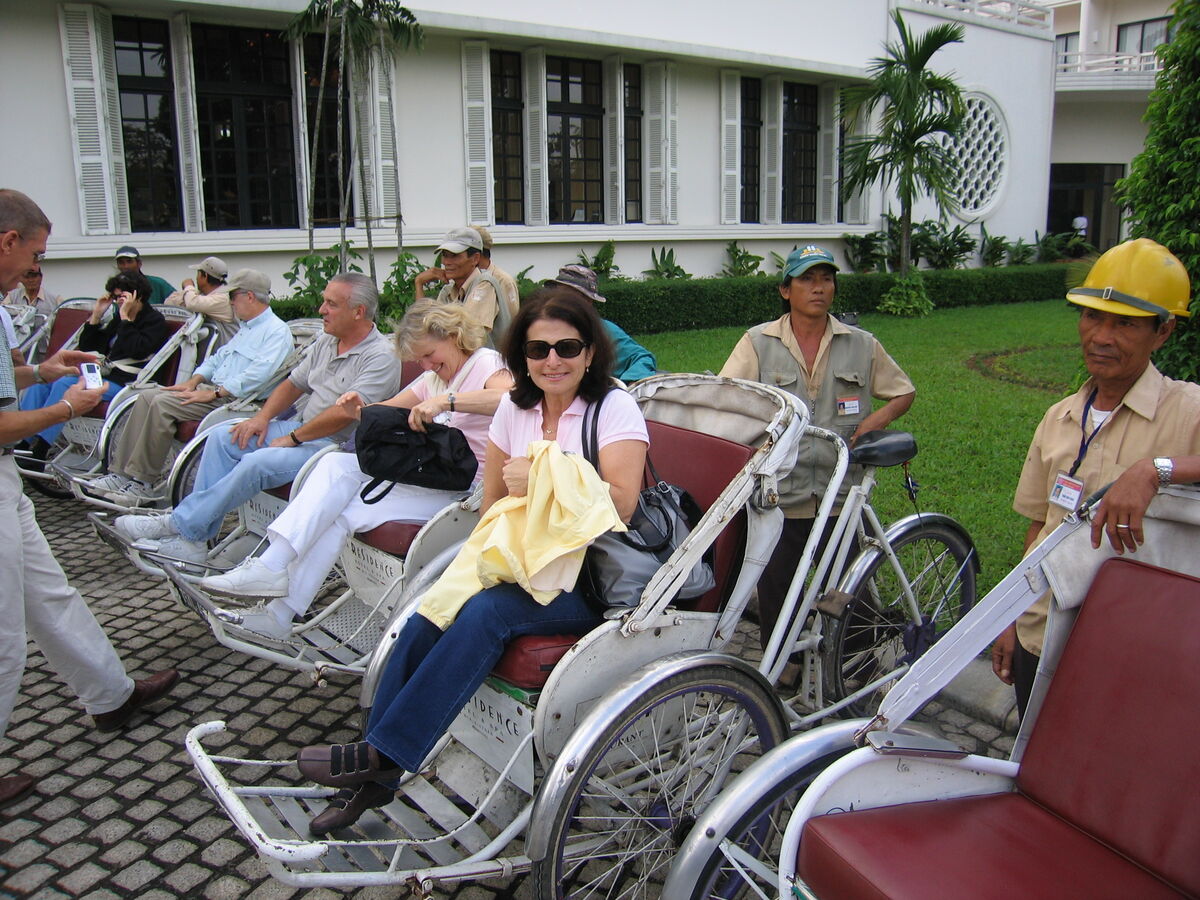
(Download)
View from out hotel room
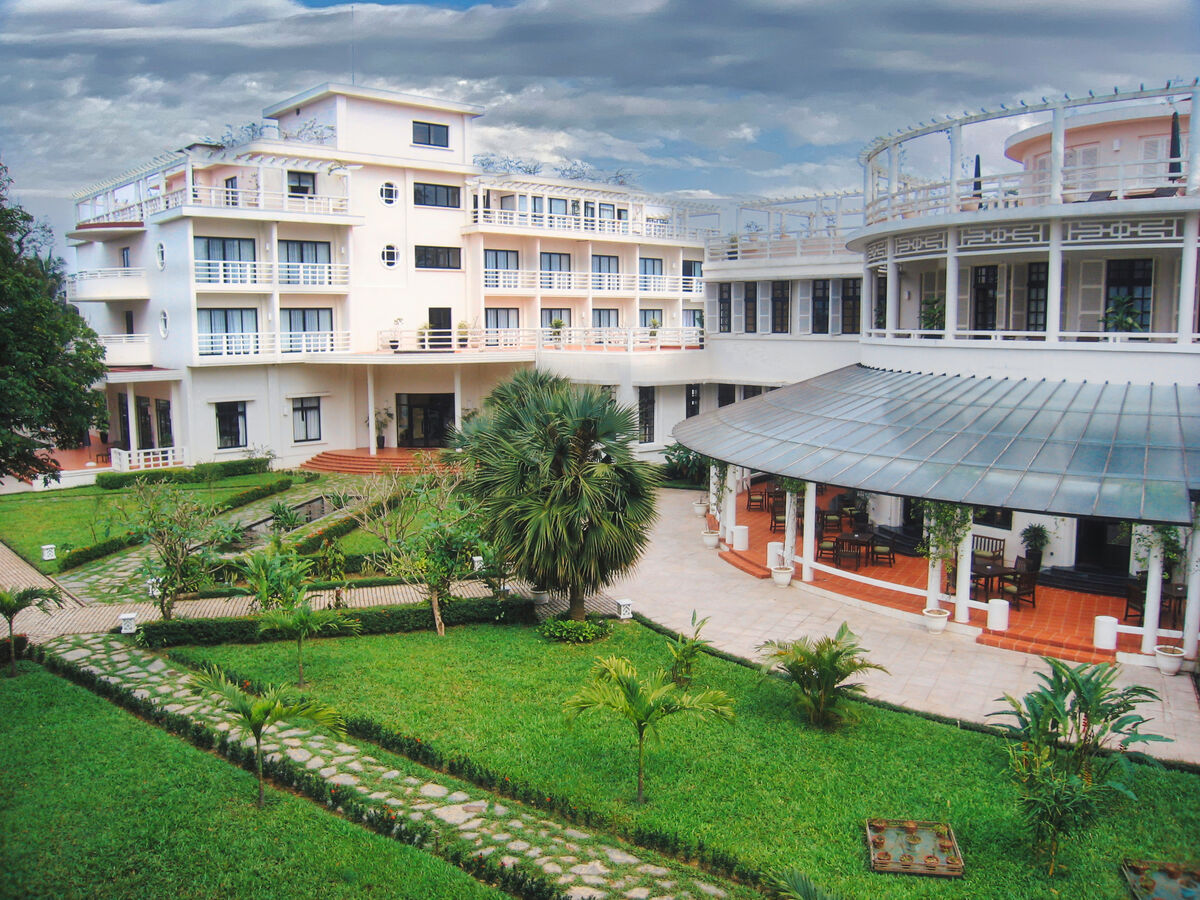
(Download)
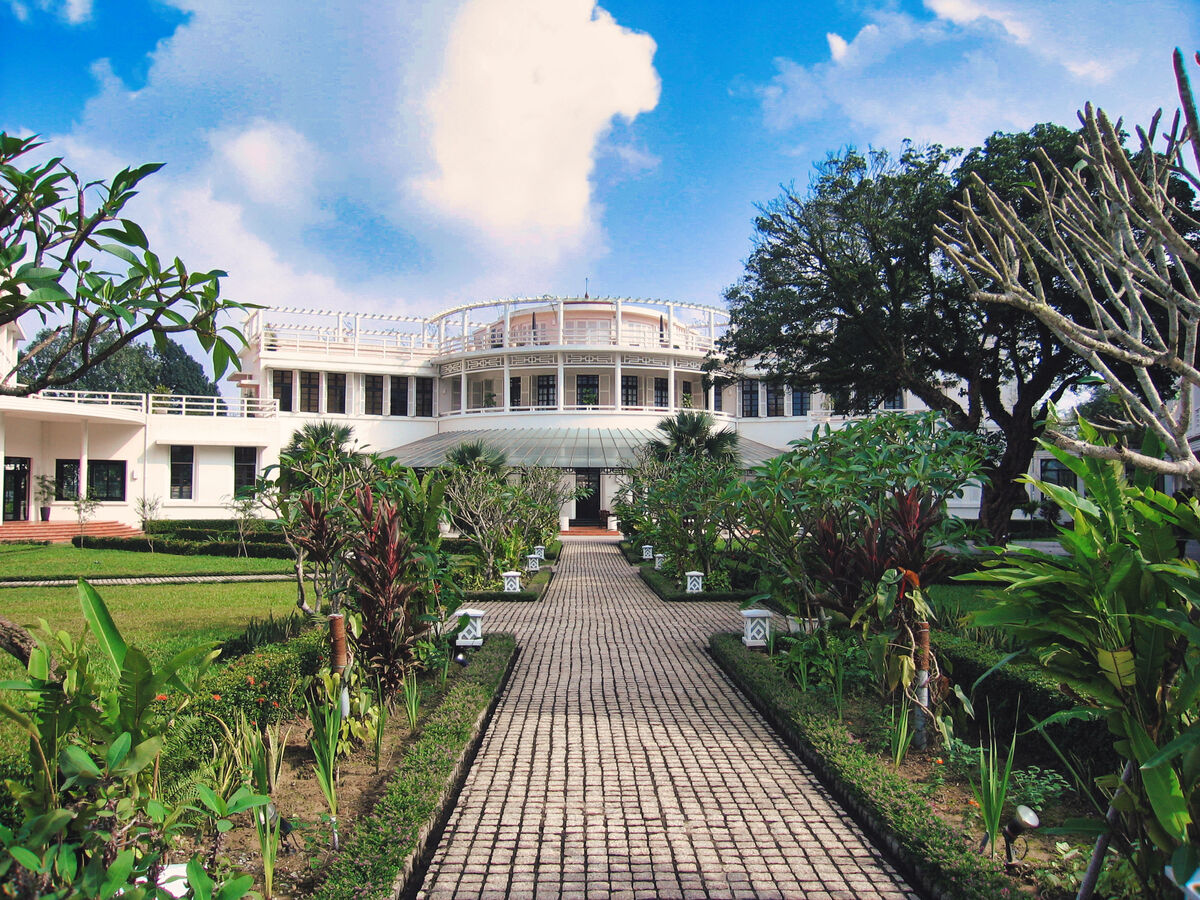
(Download)
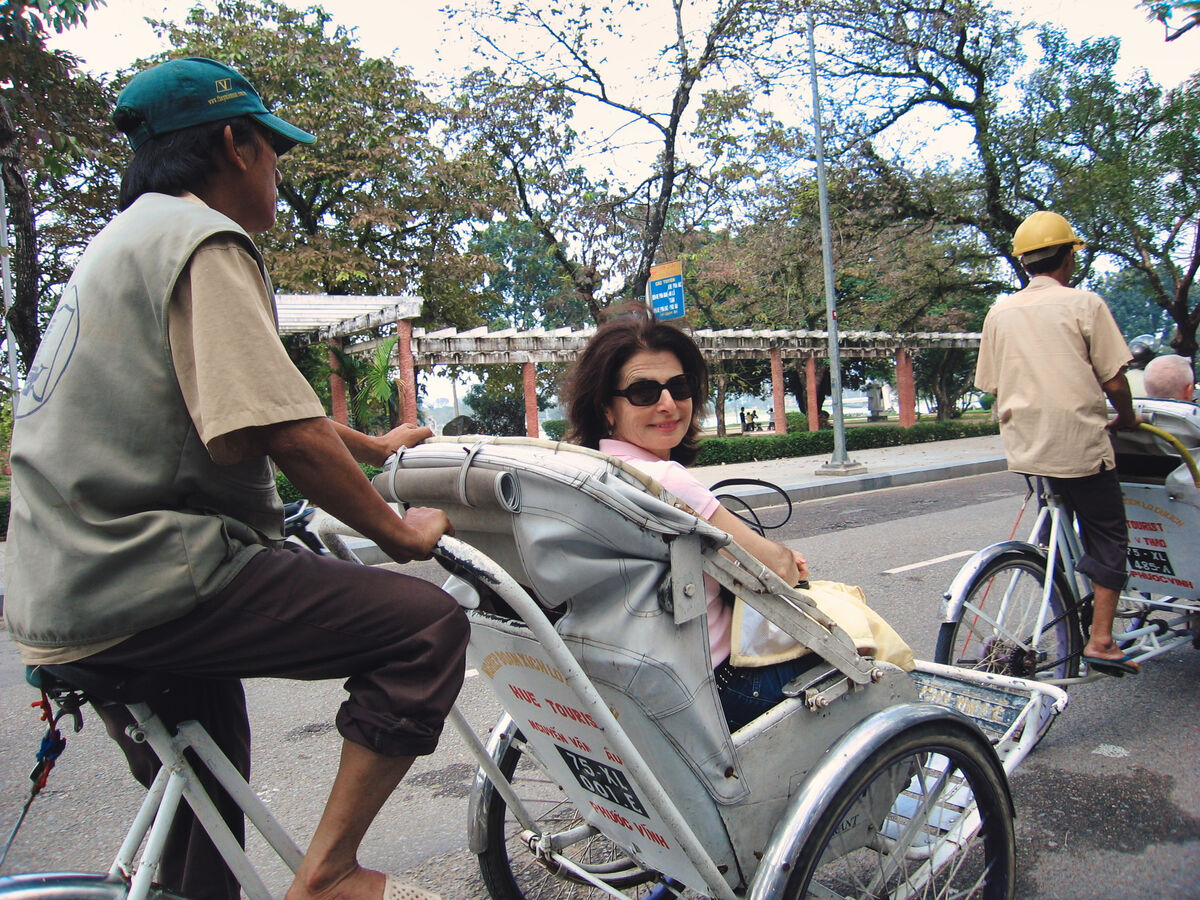
(Download)
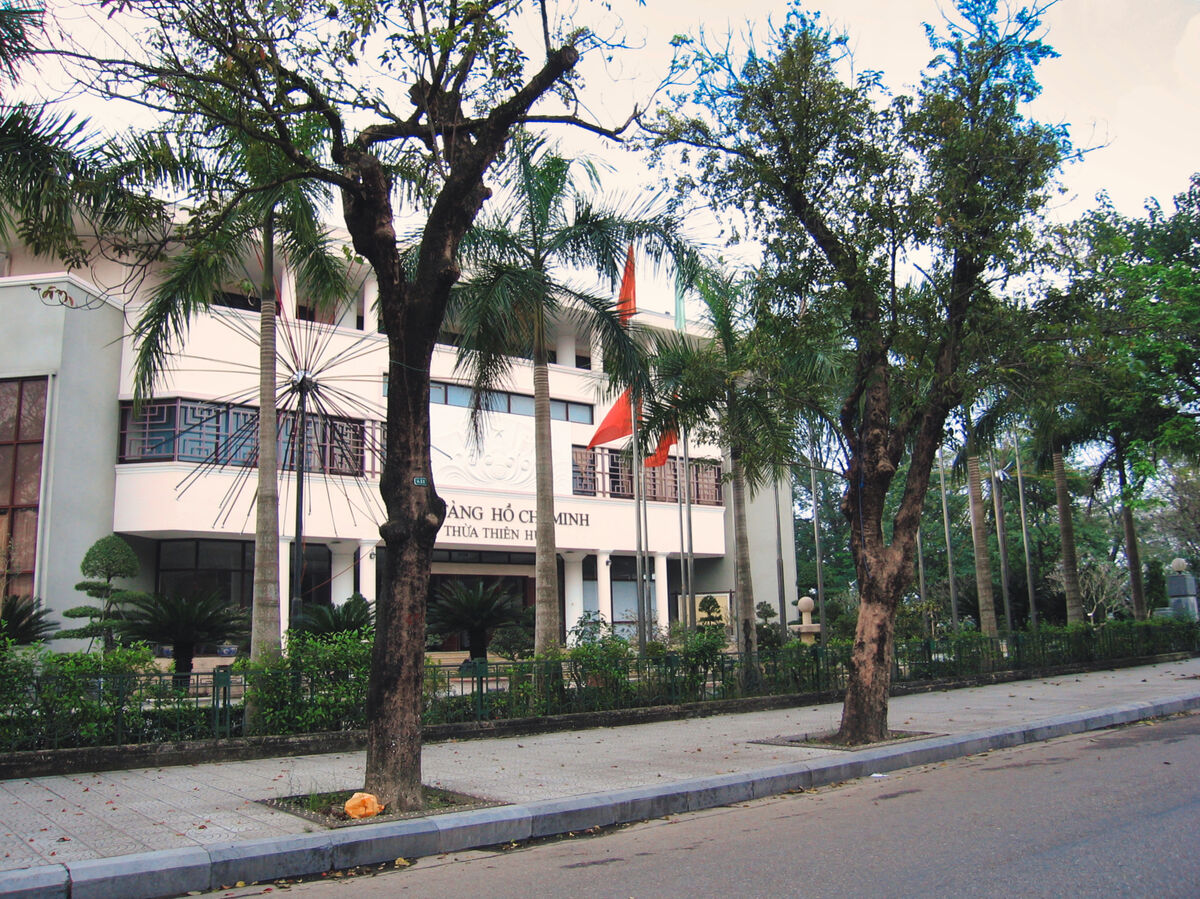
(Download)
Fort of The Citadel
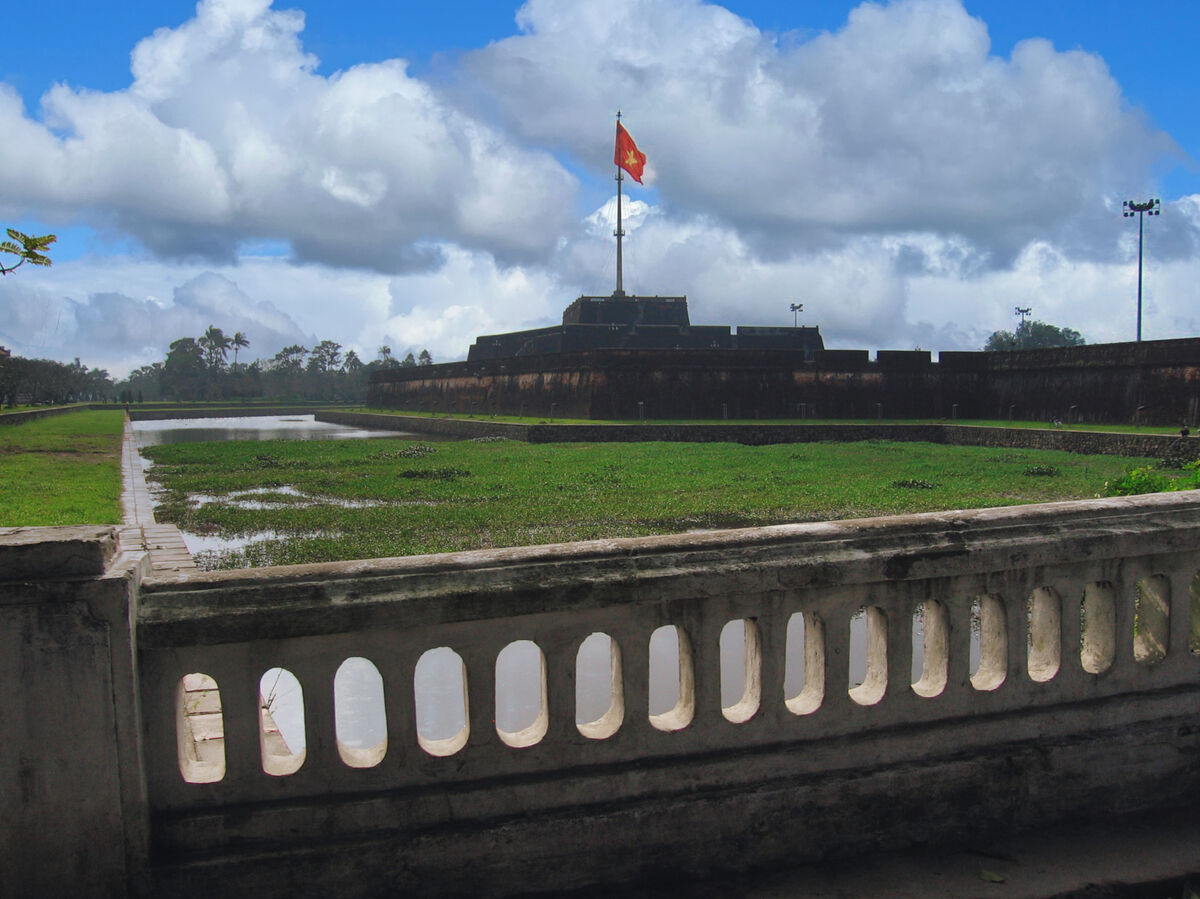
(Download)
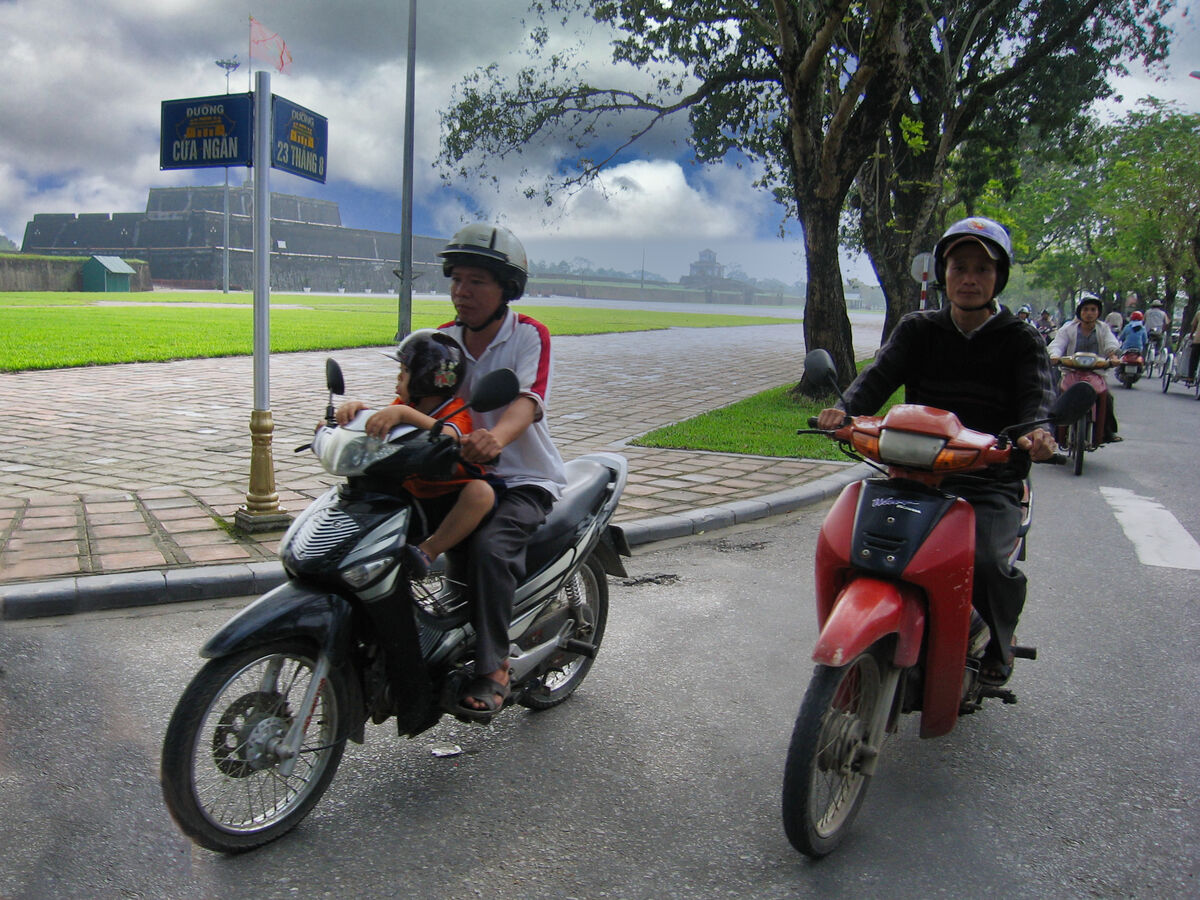
(Download)
Ngo Mon Gate, the main entrance to the Nguyen dynasty Imperial Palace (Hue Cung Vua) in Hue, Vietnam.
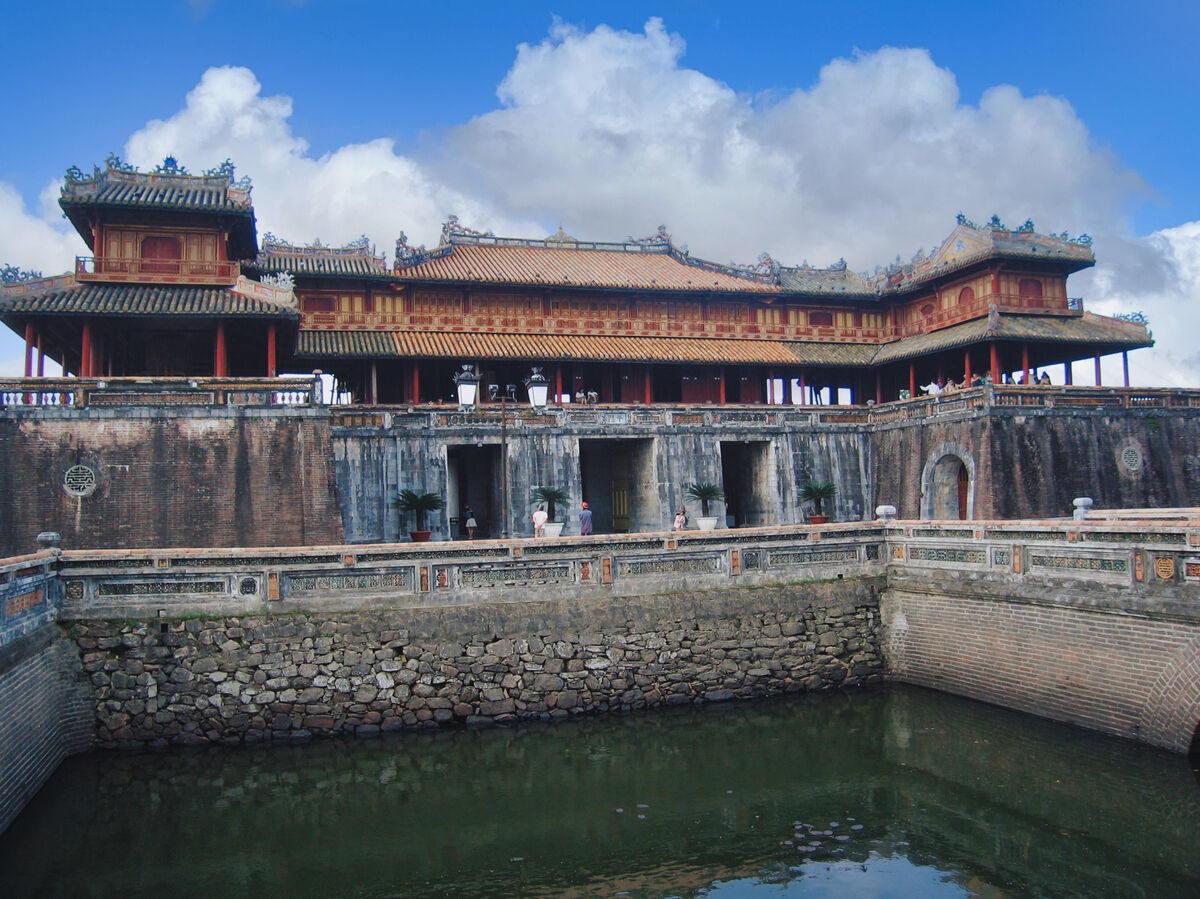
(Download)
Gail at the entrance of The Forbidden Purple City
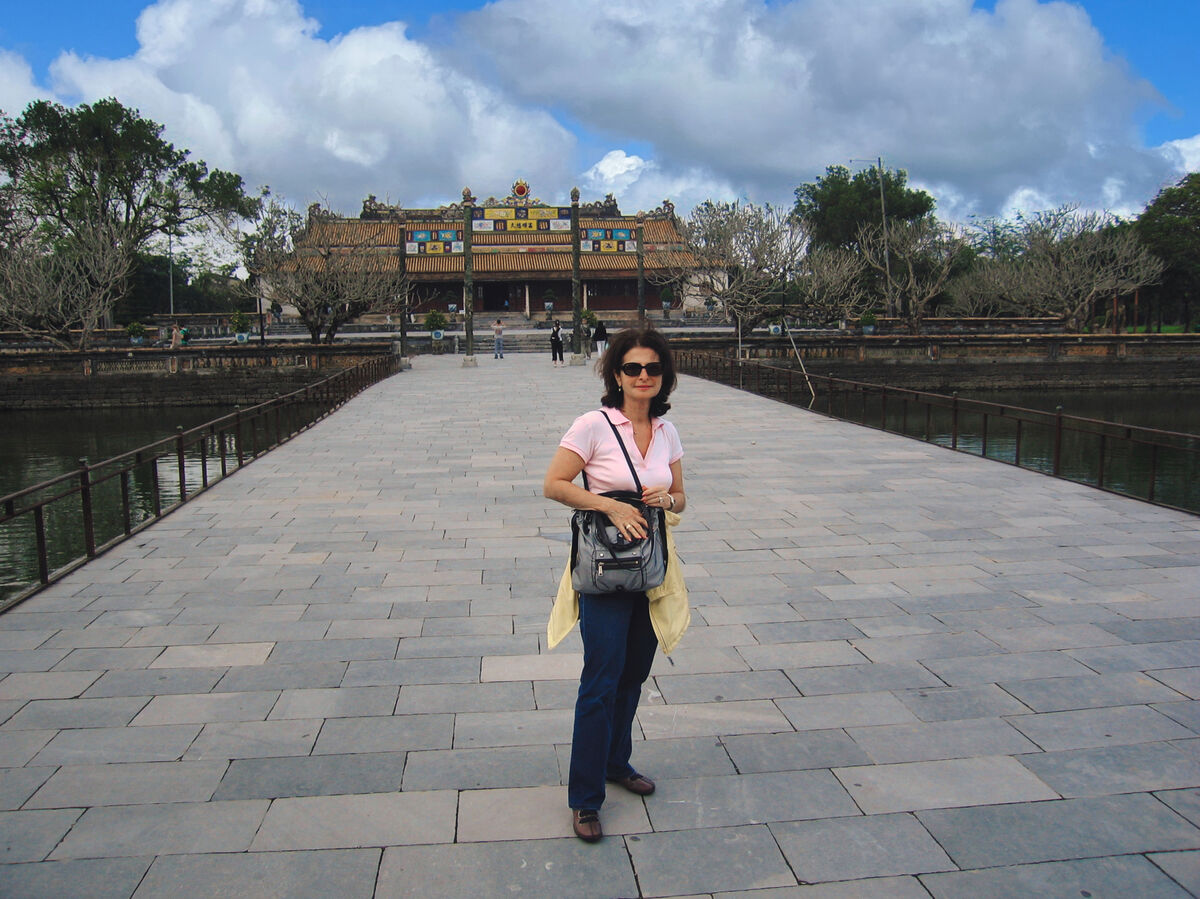
(Download)
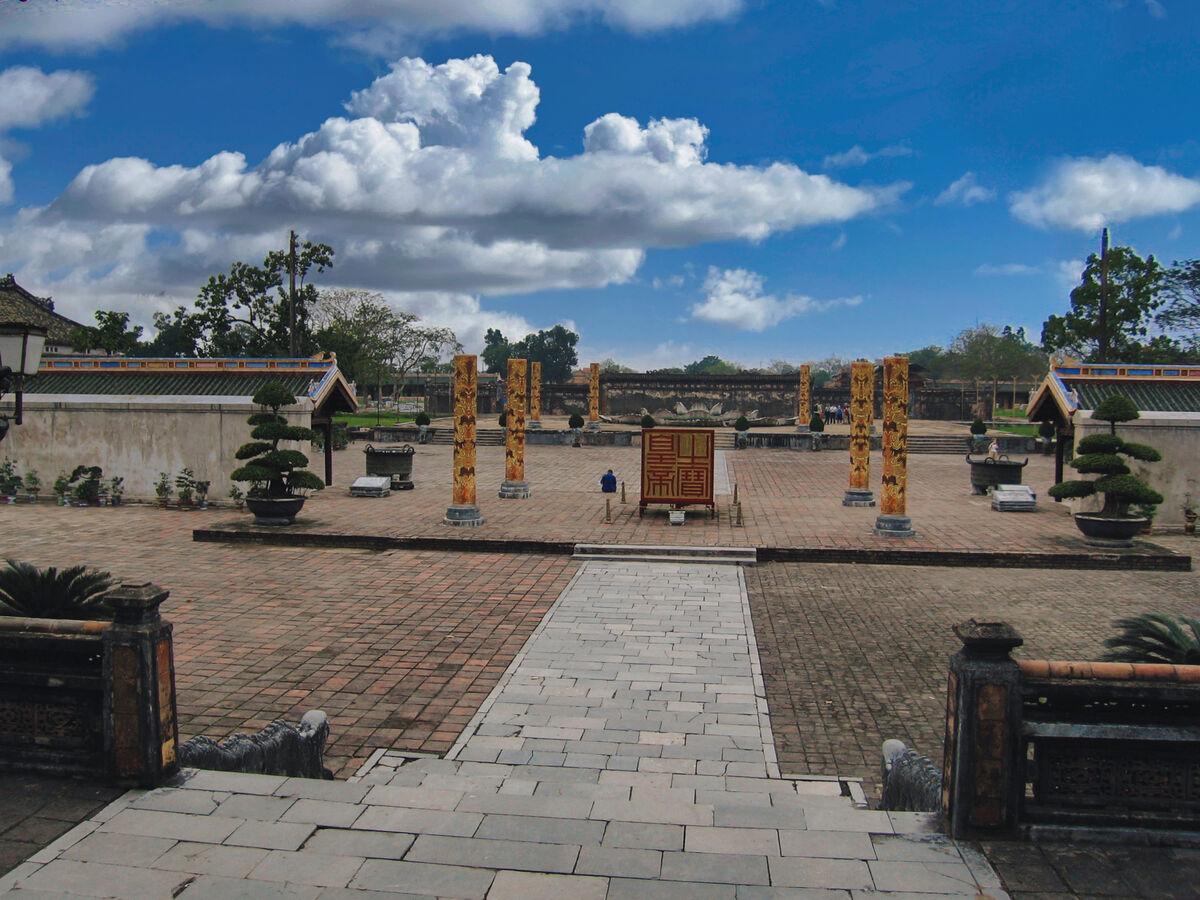
(Download)
Sep 9, 2022 14:55:33 #
Sep 9, 2022 15:24:11 #
Sep 9, 2022 15:28:18 #
Sep 9, 2022 15:29:47 #
UTMike wrote:
More good tour, Mark!
Thanks very much Mike. Glad to have you along.
Sep 9, 2022 15:30:04 #
Sep 9, 2022 15:43:33 #
Sep 9, 2022 15:44:10 #
Sep 9, 2022 16:02:14 #
kpmac wrote:
What an interesting history and tour, Mark. Great set.
Thanks very much Ken. I appreciate you taking the time to read the history.
Sep 9, 2022 16:03:31 #
twowindsbear wrote:
Many signs left from the HUGE battle there?
Thanks for commenting Bear. There are a few that we saw which I'll post in my next set.
Sep 9, 2022 16:08:17 #
Sep 9, 2022 20:12:25 #
NMGal wrote:
Loving these armchair tours.
Thanks very much Barbara. It's really a fantastic way to see a city. Fres air, sounds, 360 views and no worry about window glare!
Sep 9, 2022 23:51:37 #
srfmhg wrote:
We departed Hanoi and flew to Hue, Vietnam's most ... (show quote)
Very interesting narrative and photographic tour Mark.
Sep 10, 2022 01:58:14 #
DJphoto wrote:
Very interesting narrative and photographic tour Mark.
Thank you so much Dennis.
Sep 10, 2022 07:11:11 #
If you want to reply, then register here. Registration is free and your account is created instantly, so you can post right away.

